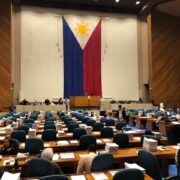Free lunch for all

Would free lunch for every public grade school child be good use of taxpayer money? Based on evidence here and worldwide, the answer is a resounding yes. How would you feel if told that every peso spent on school feeding yields P17 in economic benefits—a 1,600-percent return on the investment? This is the average that a 2020 study by Harvard professor Stephane Verguet and his associates estimated from worldwide data, and the ratio could go as high as 35.
Many now know that stunting due to severe malnutrition in one out of three to four Filipino 5-year-olds and younger critically threatens the future productivity and competitiveness of our population and workforce. Because 90 percent of brain development happens before age 5, a child stunted at that early age will never reach full physical and intellectual potential and is irreversibly damaged for life with lower cognitive and intellectual abilities. That’s why a child’s first 1,000 days from conception (not just from birth) are absolutely critical. The good news is that the government, development partners, business and civic groups are now moving to address the problem. Should our feeding programs just focus on the youngest children, given that school feeding is too late for that?
Not at all. Yes, the first 1,000 days are essential, but the World Food Program (WFP) points out that just as crucial is nutrition in the following 7,000 days, when the brain’s neural connections are refined and strengthened. The Department of Education (DepEd) first introduced a breakfast feeding program in 1997 to address short-term hunger in selected schools. In 2011, DepEd shifted its sights to undernutrition in what is now the school-based feeding program (SBFP), which fed beneficiaries for 100 to 120 days. In 2018, Congress passed Republic Act (RA) No. 11037 (Masustansyang Pagkain Para sa Batang Pilipino Act), institutionalizing SBFP for undernourished children in public day care, kindergarten, and elementary schools. The law provides for a daily meal for undernourished kindergarten to sixth-grade public school children for at least 120 out of the 200 school days in a year.
Still, RA 11037 is not enough. Having championed school-based feeding for decades, WFP would like to see our law further strengthened if it is to make a substantial impact on children’s nutritional health and school learning outcomes. What is lacking? First, feeding only the undernourished rather than all schoolchildren can be counterproductive, as the social stigma of being a beneficiary leads many children to opt out of the program. It also misses nonwasted children who come to school hungry, hence unable to learn. Second, 120 days is too short; children whose weight had normalized often revert to being wasted once the feeding period ends. The 2024 budget provided for 220 feeding days to correct this; whether this would be sustained is unclear. Third, logistical limitations often lead to the replacement of the prescribed cycle menu of hot meals that include fortified food with less nutritious processed food and take-home rations (like Nutribuns).
Free lunches are more efficient and effective when all public school children are fed. India, Sweden, Finland, Estonia, and some states in the United States are among those that already do, while Indonesia is moving in that direction. WFP notes how, globally, public investment in universal free school lunches pays back handsomely in both short- and long-term benefits. In the short term, it creates jobs: for every 100,000 children fed, an average of 1,668 jobs are created in kitchen, transport, and handling operations. Local farmers benefit when food used is procured locally, providing them a stable local market, improving their incomes and ability to invest in increased production, efficiency, quality, and resilience. In the longer term, education and health outcomes improve, raising future workers’ productivity and incomes. Public health-care costs decline as school meals reduce the risk of malnutrition and noncommunicable diseases. And with improved students’ retention, reduced repetition, and more timely completion of schooling, the education system becomes more efficient.
In a WFP-supported homegrown SBFP in Datu Blah Sinsuat, Maguindanao del Norte, a pleased parent-volunteer beamed: “Tumaas ang timbang (ng anak ko) … Dati ay hindi siya kumakain ng gulay, ngayon halos araw-araw na siyang kumakain nito. Parati na ring present at wala na masyadong batang nag-aabsent.” To the children’s parents, the gains are clear. To the country as a whole, the payoff from universalizing SBFP would far outweigh the tens of billions of pesos WFP estimates to be required. If Congress is able to divert that much to politically motivated ayudas on a whim, I don’t see why funding free lunch for all in our schools can’t be done.


















